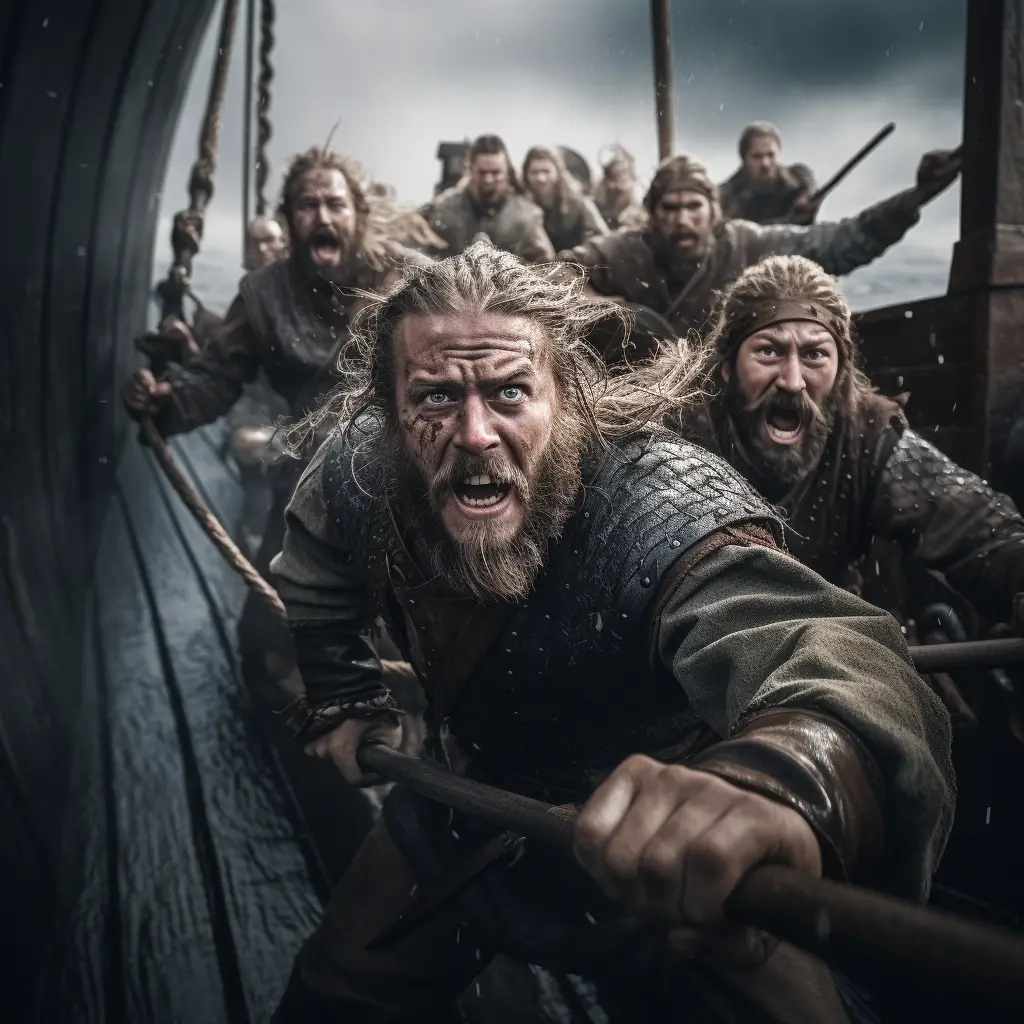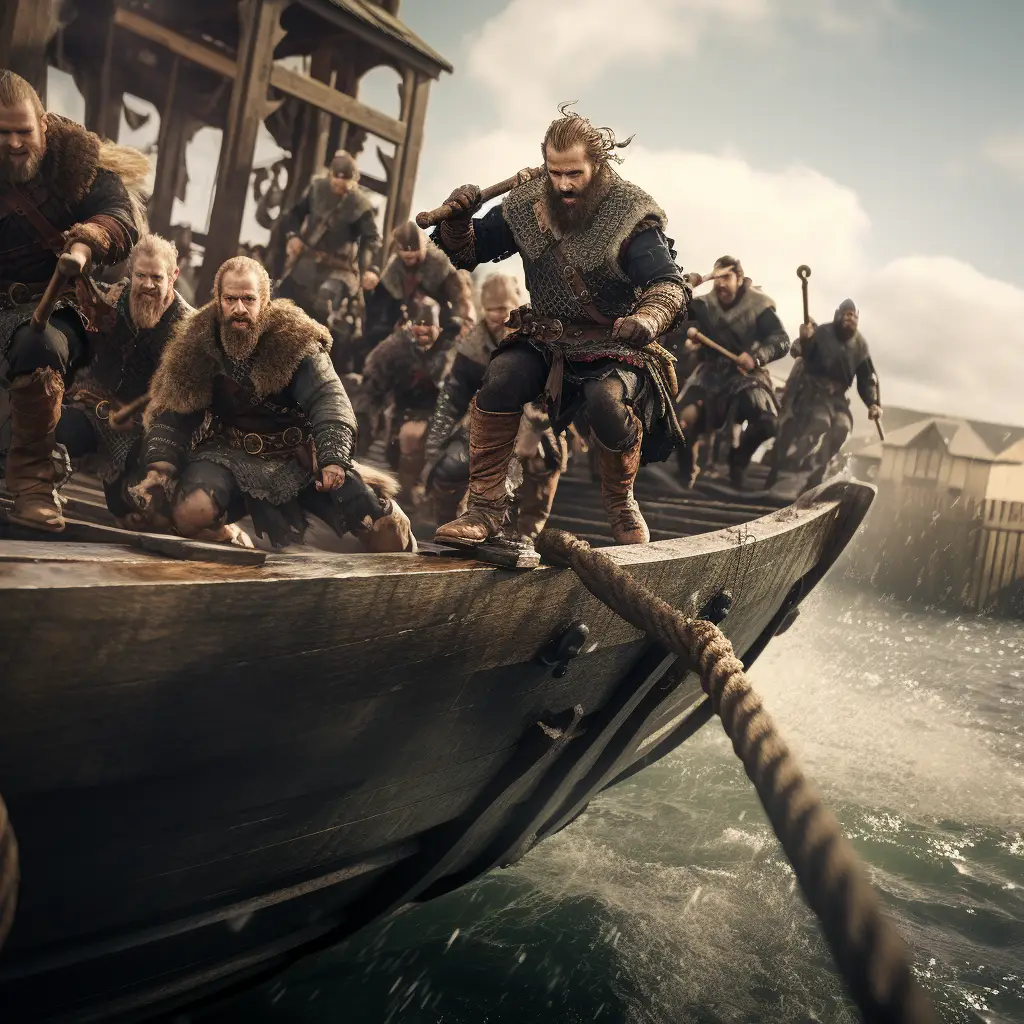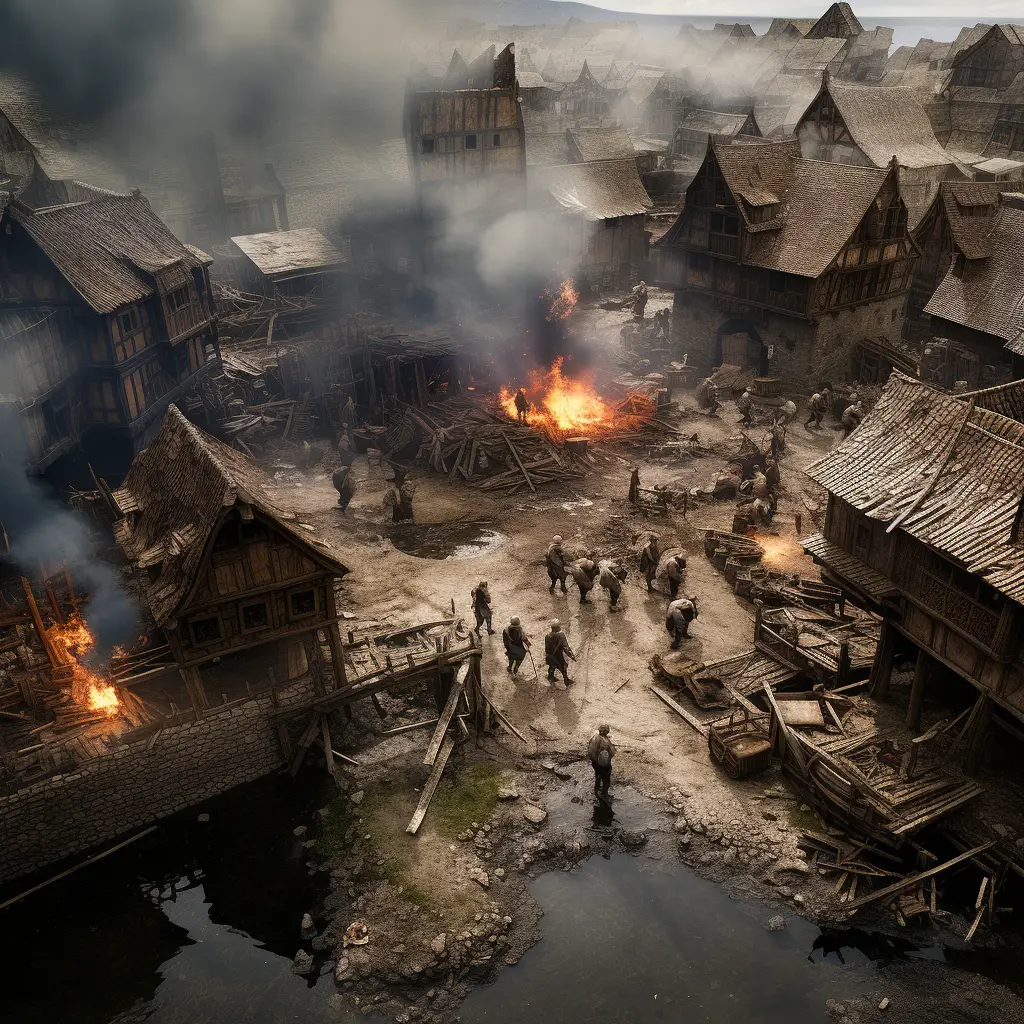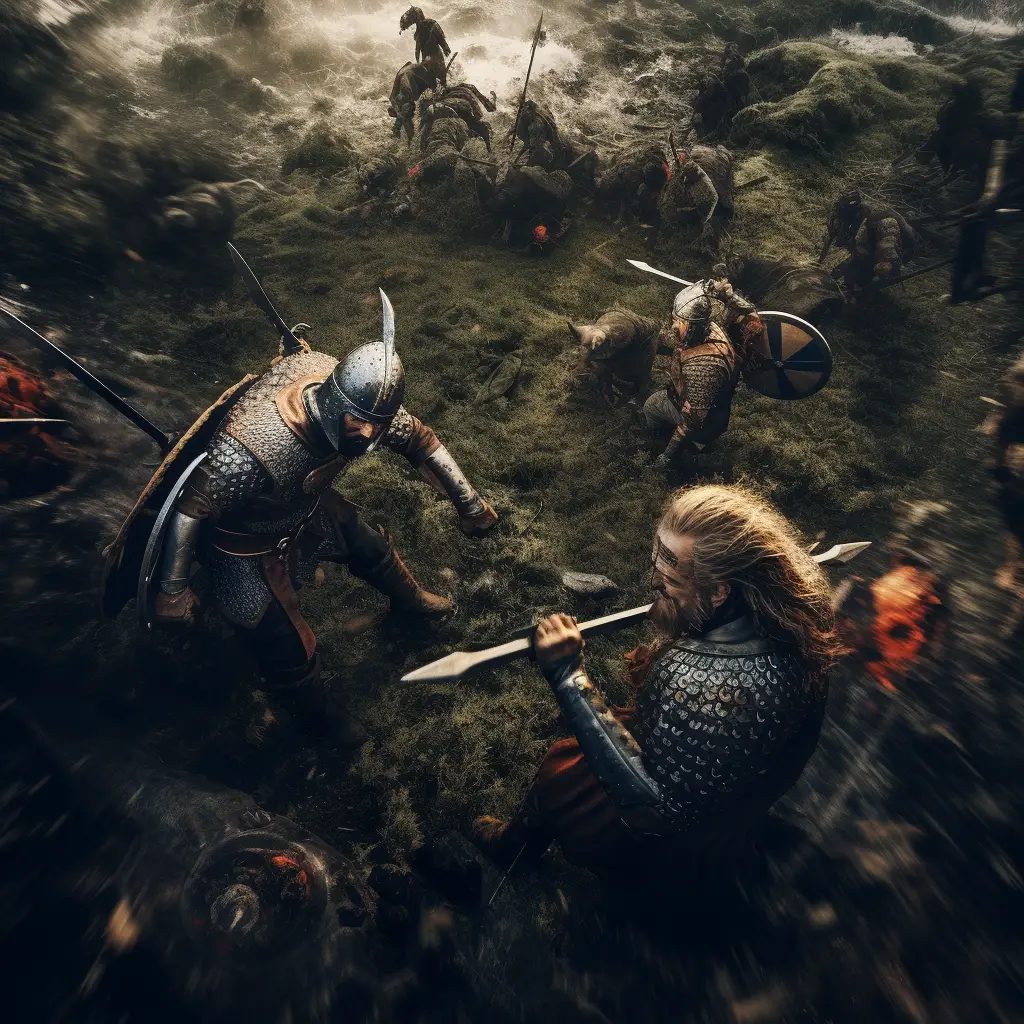Viking warfare was a central aspect of their culture and identity during the Viking Age. Here’s a brief overview of Viking warfare.
Overall, Viking warfare was characterized by its adaptability, mobility, and ferocity, leaving a lasting impact on the history and culture of the medieval world.
Raids and Pillaging: Vikings were notorious for their raiding expeditions along coastlines and rivers. They would often strike suddenly, targeting monasteries, villages, and towns for loot, slaves, and valuable resources.
Warrior Culture: Vikings had a strong warrior ethos, valuing bravery, skill in combat, and loyalty to their leaders. Warriors were highly respected in society, and feats of bravery in battle were celebrated.
Longships: The Vikings’ success in raiding was partially attributed to their advanced shipbuilding skills. They used longships, which were shallow-draft vessels with both sails and oars, allowing them to navigate rivers and coastal areas, and execute surprise attacks.
Weapons and Tactics: Vikings were skilled fighters who utilized a variety of weapons including swords, axes, spears, and bows. They were also adept sailors, using their longships to quickly navigate waterways and launch surprise attacks. In battles, they employed tactics such as shield walls for defence and ambushes to outmanoeuvre their enemies.
Trade Routes: Vikings also raided along established trade routes, disrupting commerce and seizing valuable goods. Their raids had both economic and psychological impacts on the regions they targeted.
Siege Warfare: While Vikings were known more for their hit-and-run tactics, they were also capable of conducting sieges when necessary. They would lay siege to fortified settlements, using tactics such as battering rams, siege towers, and scaling ladders to breach defences. For example, the Great Heathen Army’s campaigns in England during the 9th century led to the establishment of the Danelaw.
Captives and Slavery: Vikings would capture people during raids, and some of them were taken as slaves. Slavery was a significant aspect of Viking society, and captives could be sold or traded.
Leadership and Organization: Viking armies were led by chieftains or kings, who commanded the respect and loyalty of their warriors. While there was a degree of hierarchy within Viking society, leadership in battle was often based on merit and reputation rather than strict social rank.
Aftermath: While the image of Vikings as ruthless raiders is prominent, they also established settlements and kingdoms through conquest and colonization. This expansion eventually led to the integration of Viking culture into the regions they settled, such as Normandy in France and parts of England.



